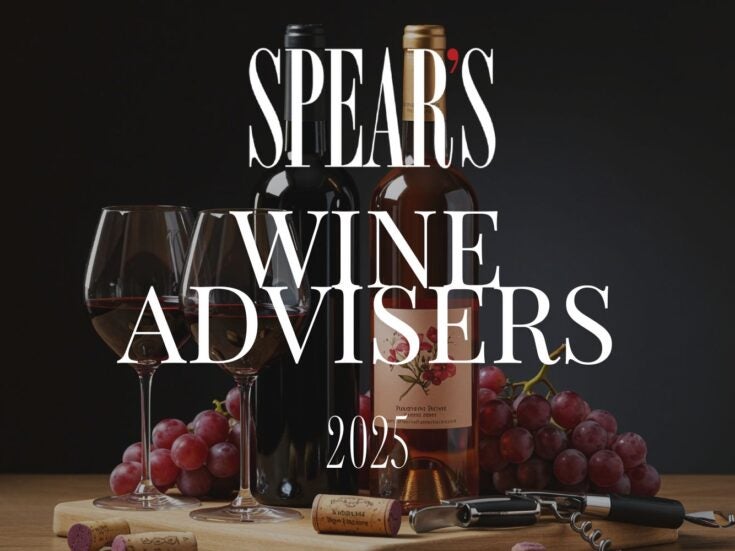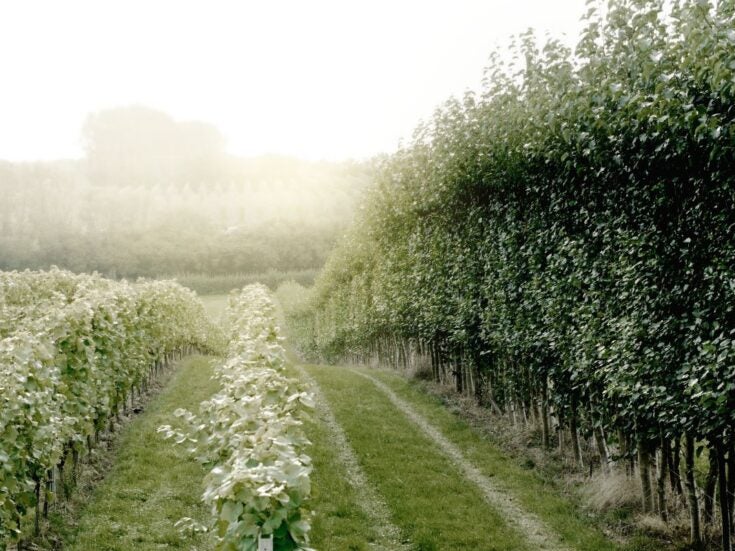
¿Quéviar?
We’re used to free-range eggs, so why not organic caviar? Douglas Blyde dons his waders for some Spanish roe
NAKED, HAIRY SANCHO fits much of his face into the caviar tin, greedily oblivious to irked onlookers’ stares. Sancho, of course, is a stray feline, making the most of a gauche waiter’s expensive accident.
I’m as keen as Sancho to test my palate on the ebony output of Riofrio, the world’s first organic caviar farm. Although it’s beautiful under magnolia-filtered evening sun, the setting — the modest home-turned-museum of the early-20th-century Andalusian composer Manuel de Falla — is perhaps an odd venue to start a gourmet weekend. After all, Falla was gripped by hypochondria rather than hedonism.

The following day I leave the gates of the five-star Hospes Palacio de los Patos hotel in another local speciality, the Hurtan convertible. In rush-hour gridlock, cyclists in luminous Lycra initially overtake me. But Granada’s supermarket- and caravan showroom-strewn outskirts soon fall away in favour of rocky scrub sown with trees, then olives sprouting out of ruddy soil.
Eventually we bounce along down an unmarked track. In the distance an operative clad in a disposable paper suit unhooks a sturgeon, its gills stained scarlet: the first of 60 today.
Riofrio’s export manager, Sergio Casares, takes me on a tour of the facility, which seems surprisingly idyllic for a slaughterhouse. Beside us, a shoal of sturgeon whip their tails in a pool fed from the Sierra Nevadas; others sleepily sunbathe.
‘We began in 1965 farming rainbow and brown trout,’ says Casares. ‘But the brown proved too aggressive. We were Spain’s first commercial fish farm, diversifying in 1987 with Acipenser naccarii, or Adriatic sturgeon.’ But aren’t countries bordering the Caspian and Black Seas more commonly thought of for sturgeon than Iberia? ‘There used to be a big culture of caviar in the Spain of the 1920s,’ he answers. ‘But overfishing, the damming of the Guadalquivir and rising pollution forced the sensitive sturgeon from our rivers.’

Like a single malt distillery, setting up a caviar farm from source and infrastructure to consistent production is a long-term project. ‘Learning how to farm sturgeon was a lengthy process,’ recalls Casares. ‘Ours take about sixteen years to yield roe, double that of other caviars on the market. Our first harvest occurred in 2003, but we barely got 30kg, gifted to lucky friends. Then it took five more years to sustain a stable product. Now we’re building Europe’s biggest fish farm in Navarra, which will yield nine tonnes of caviar a year versus the 3.5 tonnes here.’
Excessive poaching has led to complex restrictions on the harvest and trade of wild caviar in recent years. Although sturgeon farms aren’t uncommon, with antibiotics banned in favour of homeopathy, Riofrio’s organically raised sturgeon remain unique. We don waders by a patch of green teeming with butterflies, crickets and flies, then ease into a partially drained lagoon. ‘The sturgeon doesn’t reveal its gender until it is eight years old,’ says Casares. ‘Then we kill males for the meat and let females ovulate to nature’s biological clock.’
The morning’s heat, already creeping into the high twenties, contrasts with the cool water. An occasional fin ripples through. Casares’s colleague scoops a docile adolescent and holds it airborne. ‘It can survive an hour or two out of the water,’ says Casares. ‘Sturgeons were here before dinosaurs and haven’t evolved for around 300 million years. They’re living fossils, very, very fast, with no nerves or predators. They can live to be 100.’
Clearly motivated by my incredulous expression, Casares continues to dispense statistics. ‘The biggest Beluga caught was 1,500kg, the weight of an average car. The Loch Ness monster was probably a sturgeon too!’ I point out an injured specimen, body contorted as a question mark. ‘They regenerate severed spinal columns,’ he shrugs. ‘It would be amazing to learn how they do it to help humans.’ As the fish is cradled back, Casares morbidly asks: ‘Want to see one killed?’
I’m transferred to the care of the white-suited flunky in charge of the ‘captive bolt’ gun. Casares explains with technical precision that death is the only way to ensure roe remains at the perfect stage to make ‘quality’ caviar. ‘If we let roe mature inside the sturgeon until the animal would release them, then the roe’s external membrane would be too thin to stand maturation.’
After being weighed, the sturgeon are transferred to Javier Domezain, who is surprisingly amiable considering the amount of death he must witness. Within white walls, Domezain expertly guts one, smoothly drawing a glinting blade along its belly’s centre. It obligingly reveals 3.5kg of densely packed pewter roe. Barring the swim bladder, there appears little else left.

Illustrations by Maggie Li
‘Sinew and fat are removed and sold for cosmetics while roe is sieved, rinsed with UV-filtered water and slightly salted to the secret house recipe,’ Domezain commentates. Ladled in the warm hollow between my thumb and forefinger, then inelegantly consumed, the virgin, unsalted roe tastes resolutely unfishy. But its firm texture resists.
From capture and slaughter to salting, it has taken fewer than twenty minutes in all. I mention how the process appears to be remarkably simple, and Domezain agrees. ‘Our only modern machinery is the fridges.’

Back in the warmth outside, trestle tables heave with home hot-smoked sturgeon meat. The nearby captive bolt gun provides macabre percussion. Pinkish, rich in omega 3 and representing particularly efficient conversion of feed to flesh, according to Casares, the super-food tastes positively fatty, a cross between otoro and turkey. ‘There’s no better meat than ours,’ Casares asserts between mouthfuls. It’s so good I ponder why it isn’t harnessed by more restaurateurs.
It’s time to return to Palacio de los Patos to taste a procession of caviar-laden dishes. Inspired by the holder of three Michelin stars, Michel Troisgros, the hotel’s head chef Javier Perez delicately ladles caviar on fresh sturgeon loin with toasted sugar crust in ghoulish-looking but sweet cherry sauce; barely cooked coral-laden quisquilla prawns with seaweed blinis and cauliflower cream; and plump scallops steamed in batter.
‘Our objective is to feel a connection with the stones and water,’ says the founder of the boutique chain of nine properties, Antonio Perez Navarro. ‘We’re trying to catch the Andalusian essence of the Alhambra here.’ And by re-appropriating a formerly Spanish delicacy, they’re doing just that.
Three nights’ ‘Discover Caviar’ at Hospes, Granada, costs from €1,285, including the tour of Riofrio, a private plane tour and the caviar menu, or €6,000 including harvesting a sturgeon
www.hospes.com Reservations: +34 902 254 255.
Douglas Blyde writes about leading chefs, wines and restaurant designers






